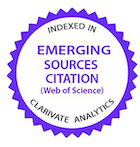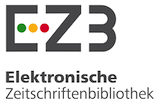Comparison of the amount of aqueous flare between laser photometry and subjective evaluation techniques in dogs undergoing phacoemulsification
DOI:
https://doi.org/10.1590/1809-6891v25e-76758EAbstract
This study aimed to compare the quantification of aqueous flares using laser photometry and
subjective clinical determination after phacoemulsification through the V-prechop nucleodissection
technique in dogs. Forty-three dogs of different breeds, males and females, aged 3–10 years, with
mature (G2, n = 22) and immature (G1, n = 21) cataracts, were included. After surgery, the patients
were evaluated weekly for aqueous flares (using laser flare photometry) and clinically evaluated using
slit-lamp biomicroscopy over different periods. Intraocular inflammation was more evident in patients
with stage G2 disease than in those with stage G1 disease. Over time, it regressed in most animals,
persisting to a mild degree in three animals by the end of the observation period. Statistical analyses
revealed key differences between the groups in the immediate postoperative period and after 30
days of observation. “Aqueous flare” (ph/ms), quantified using laser flare photometry, was higher
in the operated eyes of both groups (G1 and G2). However, a significant difference was observed
in the immediate postoperative period and at 45 and 30 days in groups G1 and G2, respectively.
Furthermore, when comparing the operated eyes of each group, a significant difference was observed
in the preoperative period and 60 days postoperatively; the mean values were always higher in the G2
patients (G1-preop = 25.5 ± 11.4 ph/ms and G2-preop = 45.7 ± 17.7 ph/ms; G1-60d = 23.4 ± 8.9 ph/ms
and G2-60d = 39.8 ± 13.4 ph/ms). In conclusion, laser cell and flare photometry showed higher accuracy
in evaluating aqueous flares than clinical evaluation based on scores during the postoperative period
in phacoemulsification by V-prechop nucleodissection. The quantitative values of flares obtained
using this non-invasive method may also be used to evaluate other nucleodissection techniques in
phacoemulsification.
Downloads
References
Ladas JG, Wheeler N, Morthun PJ, Rimmer SO, Holland GN. Laser flare-cell photometry: methodology and clinical applications. Survey Ophthalmol. 2005;50(1):27-47. doi: 10.1016/j.survophthal.2004.10.004.
Sawa M. Clinical application of laser flare-cell meter. Jpn J Ophthamol. 1990;34(3):346-63. PubMed: PMID 2079779.
Hogan MJ; Kimura SJ; Thygeson P. Signs and symptoms of uveitis. I. Anterior uveitis. Am. J. Ophthalmol. 1959;47(5 Pt 2):155-70. doi: 10.1016/S0002-9394(14)78239-X.
Ikeji F, Pavesio C, Bunce C, White E. Quantitative assessment of the effects of pupillary dilation on aqueous flare in eyes with chronic anterior uveitis using laser flare photometry. Int Ophthalmol. 2010;30(5):491-4. doi: 10.1007/s10792-010-9373-0.
Millar JC, Galbet BT, Hubbard WC, Kiland JÁ, Kaufman PL. Endothelin-1 effects on aqueous humor dynamics in monkeys. Acta Ophthalmol Scand. 1998;76(6):663-7. doi: 10.1034/j.1600-0420.1998.760605.x.
Oshika T, Kato SI, Mori M, Araic M. [Aqueous flare and cells after mydriasis in normal human eyes]. Nippon Ganka Gakkai Zasshi. 1989;93(6):698-704. Japanese. PubMed: PMID 2816578.
Agrawal R, Keane PA, Songh J, Saihan Z, Kontos A, Pavesio CE. Classification of semi-automated flare readings using the Kowa FM 700 laser cell flare meter in patients with uveitis. Acta Ophthalol. 2016;94(2):135-41. doi: 10.1111/aos.12833.
Krishnan K, Hetzel S, McLellan GJ, Bentley E. Comparison of outcomes in cataractous eyes dogs undergoing phacoemulisification versus eyes not undergoing surgery. Vet Ophthalmol. 2020;23(2):286-91. doi: 10.1111/vop.12724.
Andrade AL, Conceição LF, Morales A, Padua IR, Laus JL. V-prechop nucleodissection technique feasibility the phacoemulsification in dogs with cataracts. Clinical aspects and specular microscopy. Semina Ciências Agrárias. 2020;41(6):3107-20. doi: 10.5433/1679-0359.2020v41n6Supl2p3107.
Nafströn K, Eksten B, Roselen SG, Spiess BM, Percicot CL, Ofrei R. Guidelines for clinical electroretinography in the dog. Doc Ophthamol. 2002;105(2):83-92. PubMed: PMID 12462438. doi: 10.1023/a:1020524305726.
Gelatt KN. Veterinary ophthalmology. 6th ed. Philadelphia: W. B. Saunders; 2012. p. 2752.
Munger RJ. Catarata. In.: Laus JL. Oftalmologia clínica e cirúrgica em cães e gatos. 1st. ed. São Paulo: Roca, 2009. p.116-32.
Krohne SG, Krohne DT, Lindley DM, Will MT. Use of laser flaremetry to measure aqueous humor protein concentration in dogs. J Am Vet Med Assoc. 1995;206(8):1167-72. PubMed: PMID 7768737.
Slatter D. Fundamentos de oftalmologia veterinária. 3rd ed. São Paulo: Roca, 2005. p 686. Portuguese.
El-Maghraby A, Marzouki A, Matheen TM, Souchek J, Der Karr V. Reproducibility and validity of laser flare/cell meter measurements as an objective method of assessing intraocular inflammation. Arch Ophthalmol. 1992;110(7):960-2. doi: 10.1001/archopht.1992.01080190066030.
Wilkie DA, Colitz CM. Surgery of the canine lens. In: Gelatt KN, editor. Veterinary ophthalmology. 4th ed. Iowa: Blackwell, 2007. p. 888-931.
Padua IR, Valdetaro GP, Lima TB, Kobashigawa KK, Silva PE, Aldrovani M, Padua PM, Laus JL. Effects of intracameral ascorbic acid on the corneal endothelium of dogs undergoing phacoemulsification. Vet Ophthalmol. 2018;21(2):151-9. doi: 10.1111/vop.12490.
Krohne SG, Blair MJ, Bingaman D, Gionfriddo JR. Carprofen inhibition of flare in the dog measured by laser flare photometry. Vet Ophthalmol. 1998;1(2-3):81-4. doi: 10.1046/j.1463-5224.1998.00016.x.
Chin PK, Cuzzani OE, Gimbel HV, Sun RE. Effect of commercial dilating agents on laser flare-cell measurements. Can J Ophthalmol. 1996;31(7):362-5. PubMed: PMID 8971457.
Downloads
Published
How to Cite
Issue
Section
License
Copyright (c) 2023 Brazilian Animal Science/ Ciência Animal Brasileira

This work is licensed under a Creative Commons Attribution 4.0 International License.
Authors who publish with this journal agree to the following terms:
- Authors retain copyright and grant the journal right of first publication with the work simultaneously licensed under a Creative Commons Attribution License that allows others to share the work with an acknowledgement of the work's authorship and initial publication in this journal.
- Authors are able to enter into separate, additional contractual arrangements for the non-exclusive distribution of the journal's published version of the work (e.g., post it to an institutional repository or publish it in a book), with an acknowledgement of its initial publication in this journal.
- Authors are permitted and encouraged to post their work online (e.g. in institutional repositories or on their website) prior to and during the submission process, as it can lead to productive exchanges, as well as earlier and greater citation of published work (See The Effect of Open Access).































